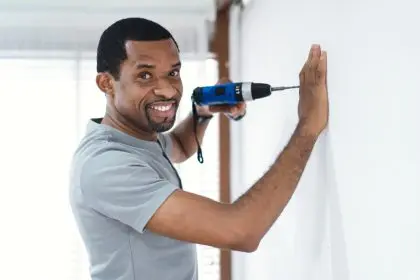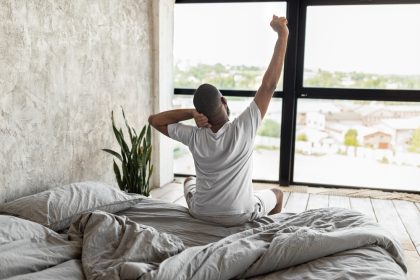Owning a home is often seen as a symbol of success, stability and the ultimate life achievement. But what many don’t realize is that homeownership comes with hidden costs that can stretch your budget and create unexpected stress. From surprise repairs to taxes and maintenance, the expenses can add up faster than you think, leaving many homeowners wondering if they were truly prepared.
The reality extends far beyond the down payment and monthly mortgage. Property taxes, insurance premiums, maintenance costs and unexpected repairs create a complex web of expenses that can challenge even well-prepared buyers. Understanding these hidden costs before making the leap into homeownership can help you make more informed decisions about this major financial commitment.
The hidden financial burden
When most people plan to buy a home, they focus on the down payment and monthly mortgage. But the price tag goes far beyond those line items. Property taxes, homeowners insurance, private mortgage insurance for those who didn’t hit the 20 percent down payment mark, and closing costs can shock new homeowners.
Property taxes vary depending on location but can range from hundreds to thousands of dollars per year. They don’t stay flat — local governments often increase taxes, raising your monthly escrow payments over time. Homeowners insurance is another necessity, protecting your property from disasters, but costs can climb based on the home’s value, size and natural disaster risks in the area.
For buyers who put down less than 20 percent, PMI adds an extra monthly fee until they build enough equity. Closing costs, which include fees for appraisals, inspections, title searches and legal filings, can add thousands more upfront.
These surprise financial hits can drain your savings quickly and put pressure on your finances even before you unpack your boxes. Many first-time buyers discover that their actual monthly housing costs far exceed their initial mortgage payment calculations.
Maintenance and repairs drain more than your wallet
Maintenance is one of the most underestimated aspects of homeownership. It’s easy to assume you’ll just handle things as they come up, but the truth is that regular upkeep requires both time and money.
From cleaning gutters and servicing HVAC systems to repairing leaky roofs or fixing cracked foundations, the tasks never end. The average homeowner spends about 1 percent to 4 percent of their home’s value annually on maintenance and repairs. That means a $300,000 home can cost you an extra $3,000 to $12,000 per year just to keep it in good shape.
The financial drain extends beyond immediate costs. Emergency repairs often require quick decisions and premium pricing, while routine maintenance demands consistent budget allocation throughout the year. Homeowners must plan for both predictable seasonal tasks and unexpected system failures.
It’s not just the financial burden — the emotional stress of dealing with emergencies, scheduling contractors and worrying about what might break next can weigh heavily. Homeownership isn’t simply about enjoying your space; it’s about becoming a full-time property manager on top of your existing job and life responsibilities.
The emotional toll
What makes homeownership more expensive than you think isn’t always measured in dollars. The emotional and mental costs can sometimes surpass the financial ones.
Many new homeowners experience anxiety about making mortgage payments on time, especially if they’re stretched thin. The fear of job loss or sudden illness becomes more intense when you know your home is on the line. This financial pressure can affect sleep, relationships and overall well-being.
Home improvement projects can also test relationships and patience. Couples may argue over renovations, budgets or design decisions, while single homeowners can feel overwhelmed by handling everything alone. The stress of coordinating contractors, managing timelines and staying within budget can strain even the strongest partnerships.
There’s also the sense of responsibility that weighs on homeowners — if something breaks, it’s on you to fix it. No landlord to call, no maintenance team to handle it. That pressure can lead to sleepless nights and heightened stress, especially when major systems like plumbing or electrical fail unexpectedly.
Economic factors beyond your control
Even seasoned homeowners underestimate how macroeconomic factors can make homeownership more expensive. Rising interest rates can increase monthly mortgage payments for those with adjustable-rate loans or anyone refinancing. Inflation affects everything from building materials and labor costs to utility bills and groceries, stretching household budgets even thinner.
Homeowners often face difficult decisions during inflationary periods: Should they delay repairs? Postpone upgrades? Cut back on other areas of spending? These choices can trigger feelings of frustration, anxiety and even regret over purchasing a home.
Market volatility can also affect property values, potentially leaving homeowners with less equity than expected. Economic downturns may force difficult decisions about refinancing, selling or staying put despite changed circumstances.
Association fees and neighborhood obligations
Many buyers are drawn to communities with attractive amenities like pools, gyms and landscaped parks, only to discover later that homeowners association fees can be surprisingly steep. These monthly or annual fees are often non-negotiable and can increase without much warning.
HOAs may levy special assessments for large projects like roof replacements or sidewalk repairs, forcing residents to pay thousands they hadn’t budgeted for. These unexpected expenses can arrive with little notice and few alternatives for payment.
Beyond HOAs, some neighborhoods demand more in terms of keeping up appearances. From lawn care and exterior painting to following design guidelines, the costs of fitting in and maintaining your home’s value can become another ongoing drain.
- Regular landscaping and lawn maintenance
- Exterior home updates to match neighborhood standards
- Compliance with architectural guidelines and restrictions
- Participation in community improvement projects
The wealth-building myth
One of the most common myths is that owning a home automatically builds wealth. While property appreciation can help, this isn’t guaranteed — and it doesn’t account for the costs that eat into your gains.
Between mortgage interest, taxes, insurance, repairs and upgrades, the profit from selling a home may be much less than expected. Additionally, market downturns can reduce a home’s value, sometimes leaving owners owing more than the property is worth.
Homeownership also limits mobility. Selling a house and moving isn’t as easy as ending a rental lease. This can trap homeowners in places where they might have fewer job opportunities or higher living expenses. The transaction costs alone — including real estate commissions, closing costs and moving expenses — can consume years of potential appreciation.
Protecting yourself from hidden costs
The best way to prepare is to go in with your eyes wide open. Work with trusted financial professionals who can help you project the full costs of ownership — not just the mortgage payment. Build an emergency fund large enough to cover at least three to six months of expenses, including home-related costs.
Before purchasing, get a thorough home inspection to avoid expensive surprises. Research local tax trends, HOA policies and neighborhood obligations. Consider whether you truly want the responsibility and financial commitment of owning a home, or if renting might provide more flexibility and peace of mind for your current lifestyle.
Understanding the true cost of homeownership isn’t just a list of hidden expenses — it’s the combination of financial pressures, emotional strains and unexpected obligations that come with owning a property.
While owning a home can be a fulfilling achievement, it’s essential to recognize that the dream comes with a price. By understanding the full picture, you can make informed decisions and prepare yourself for the reality of life as a homeowner.
Owning a home is not just about the joy of having your own space — it’s about embracing the responsibilities, challenges and ongoing costs that come with it. Make sure you’re ready not just financially, but mentally and emotionally, before you take that leap.















